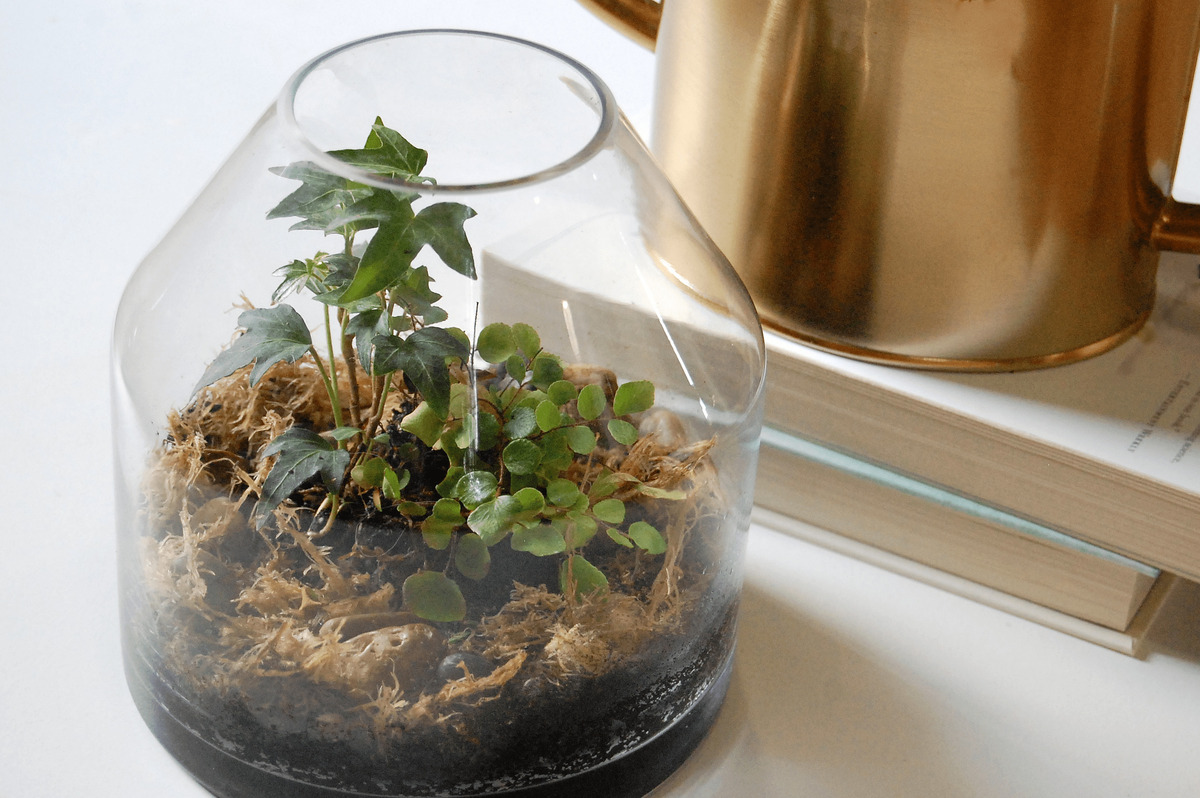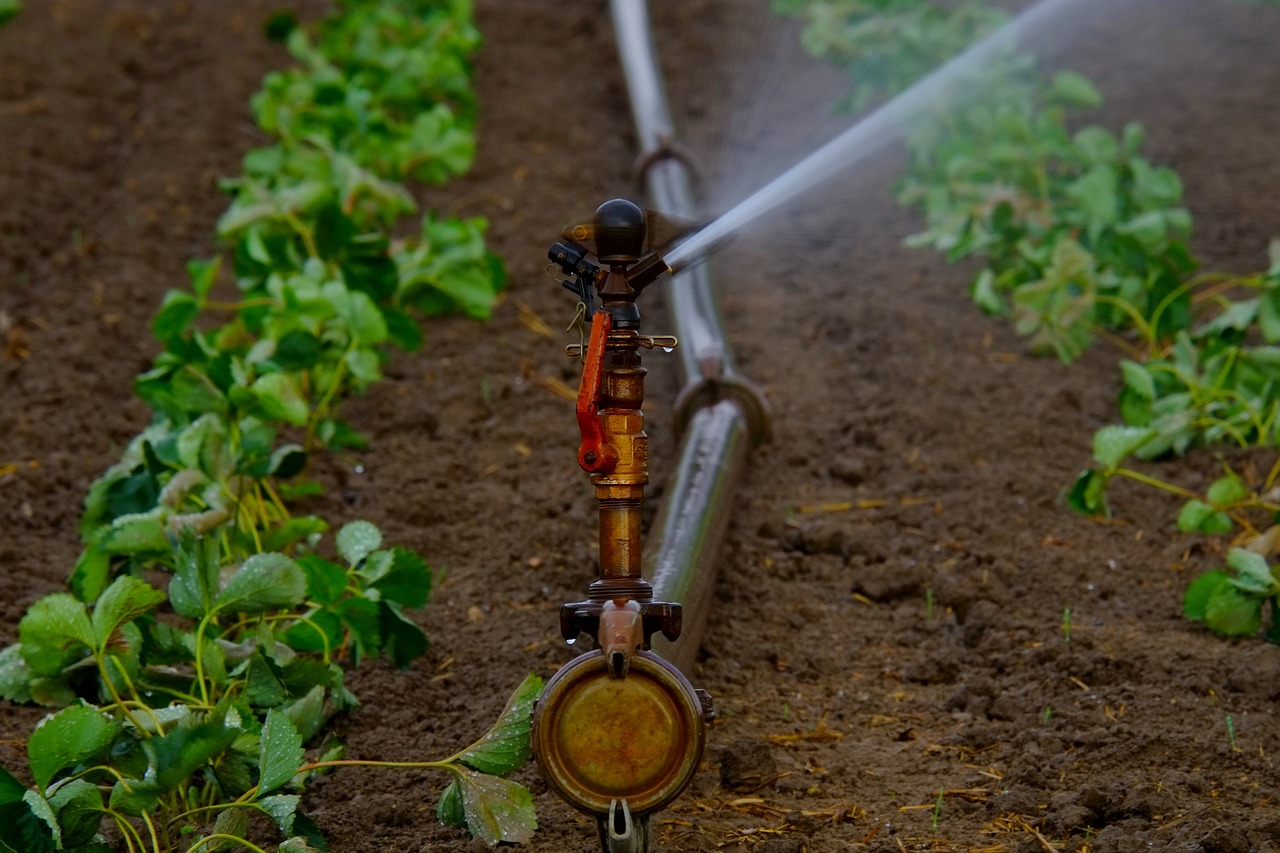Home>Gardening Tips and Tricks>Eco-Friendly Gardening>Holmgren: What Is A Closed-Loop System In Permaculture


Eco-Friendly Gardening
Holmgren: What Is A Closed-Loop System In Permaculture
Published: February 14, 2024
Learn how a closed-loop system in permaculture can create an eco-friendly gardening approach. Holmgren explains the benefits and techniques.
(Many of the links in this article redirect to a specific reviewed product. Your purchase of these products through affiliate links helps to generate commission for Chicagolandgardening.com, at no extra cost. Learn more)
Table of Contents
Introduction
Welcome to the world of eco-friendly gardening and the fascinating concept of closed-loop systems in permaculture. As our understanding of environmental sustainability grows, so does our recognition of the importance of adopting eco-friendly practices in all areas of life, including gardening.
Permaculture, which stands for “permanent agriculture” and “permanent culture,” is an ecological design philosophy that aims to create sustainable and self-sufficient systems. It emphasizes the integration of plants, animals, and microorganisms to create resilient and regenerative ecosystems.
A key principle of permaculture is the use of closed-loop systems, which are inherently self-sustaining and minimize waste. Closed-loop systems, also referred to as “circular” or “regenerative” systems, prioritize the efficient use of resources and the recycling of waste materials.
By understanding the concept of closed-loop systems in permaculture, we can make our gardening practices more sustainable and reduce our environmental impact. In this article, we will explore the definition of permaculture, delve into the intricacies of closed-loop systems, discuss their benefits, and provide examples of how they can be implemented in eco-friendly gardening.
Definition of Permaculture
Permaculture is a holistic design system that originated in the 1970s as a response to the need for sustainable and regenerative forms of agriculture. Coined by Bill Mollison and David Holmgren, permaculture integrates principles and practices from various disciplines such as agriculture, ecology, architecture, and sociology.
At its core, permaculture aims to create resilient and productive ecosystems that mimic the patterns and relationships found in nature. It encourages individuals to observe and work with nature rather than against it, fostering a deeper understanding and appreciation for the natural world.
Permaculture design follows three guiding ethical principles: care for the earth, care for people, and fair distribution of resources. These principles serve as a foundation for creating regenerative systems that enhance the health and well-being of both the environment and the community.
Integral to permaculture is the idea of closed-loop systems. Unlike conventional agriculture, which often relies on external inputs and generates excessive waste, permaculture seeks to cycle resources within the system and minimize reliance on external resources. This approach not only reduces environmental impact but also promotes long-term sustainability and self-sufficiency.
Permaculture design principles can be applied to various areas, including gardening, landscaping, food production, housing, and community development. By embracing permaculture principles, we can design and implement regenerative systems that not only meet our needs but also contribute to the health of the planet.
Understanding Closed-Loop Systems
A closed-loop system, in the context of permaculture, is a self-sustaining system that minimizes waste and maximizes resource efficiency. It operates on the principles of recycling and regenerating resources within the system rather than relying heavily on external inputs.
In a closed-loop system, the outputs or waste materials from one component of the system become the inputs or resources for another component. This cyclical process allows for the efficient use of resources while minimizing the need for external inputs.
One of the key concepts in understanding closed-loop systems is the idea of interconnectedness. In nature, systems are interconnected and interdependent – plants, animals, microorganisms, and the environment all rely on each other to thrive. Closed-loop systems mimic this natural interconnectedness by designing and integrating different components that work together harmoniously.
An example of a closed-loop system in permaculture is a composting system. In this system, kitchen scraps, garden waste, and other organic materials are collected and placed in a compost bin. Over time, these materials break down and decompose, transforming into nutrient-rich compost. This compost can then be used to fertilize plants, completing the loop. By recycling organic waste within the system, a closed-loop composting system reduces the need for synthetic fertilizers and minimizes waste.
Understanding closed-loop systems is crucial for creating sustainable and regenerative gardens. By embracing the principles of closed-loop systems, we can significantly reduce our environmental impact and create gardens that are resilient and self-sufficient.
Next, let’s explore the benefits of implementing closed-loop systems in permaculture gardening.
Benefits of Closed-Loop Systems in Permaculture
Implementing closed-loop systems in permaculture gardening offers a wide range of benefits, both for the environment and for gardeners themselves. Let’s explore some of the key advantages:
- Resource Efficiency: Closed-loop systems minimize the reliance on external inputs by recycling and reusing resources within the system. This reduces the need for synthetic fertilizers, pesticides, and other external inputs, resulting in cost savings and decreased environmental impact.
- Waste Reduction: By integrating closed-loop systems, gardeners can effectively manage and minimize waste. Organic waste can be transformed into compost, providing valuable nutrients for plants. This not only reduces landfill waste but also contributes to a healthier and more fertile soil ecosystem.
- Biodiversity and Ecosystem Health: Closed-loop systems in permaculture gardening promote biodiversity and the health of ecosystems. By mimicking natural processes and interactions, these systems create habitats and food sources for a variety of organisms, including beneficial insects, birds, and pollinators.
- Improved Soil Quality: Closed-loop systems focus on building and maintaining healthy soil. Through practices such as composting, mulching, and cover cropping, these systems enrich the soil with organic matter, improve its structure, and enhance nutrient availability. As a result, plants thrive and are more resilient to pests, diseases, and extreme weather conditions.
- Water Conservation: Closed-loop systems in permaculture gardening incorporate strategies for water conservation. Techniques like rainwater harvesting, efficient irrigation, and utilizing plants that are adapted to the local climate help reduce water usage while ensuring that plants receive the necessary moisture.
By harnessing the power of closed-loop systems, permaculture gardeners can create sustainable, productive, and low-maintenance gardens that support the natural environment. These systems not only benefit the immediate garden space but also contribute to the overall health and resilience of ecosystems at large.
Now, let’s explore some practical examples of closed-loop systems in permaculture gardening.
Examples of Closed-Loop Systems in Permaculture
Permaculture gardening abounds with examples of closed-loop systems that demonstrate the power of resource recycling and regenerative practices. Let’s explore a few practical examples:
- Composting: Composting is a classic example of a closed-loop system. Kitchen scraps, yard waste, and other organic materials are collected and placed in a compost bin. Over time, microorganisms break down the organic matter, creating nutrient-rich compost. This compost can then be used as a natural fertilizer, closing the loop and reducing the need for synthetic fertilizers.
- Greywater Recycling: Greywater recycling is a sustainable approach to water usage. Greywater, which is waste water from sinks, showers, and laundry, can be collected and treated for reuse. This treated greywater can then be used to irrigate plants, minimizing the need for fresh water and reducing strain on local water sources.
- Intercropping and Companion Planting: Intercropping and companion planting involve growing different plant species together to create mutually beneficial relationships. For example, growing legumes alongside other plants can provide nitrogen-rich soil through nitrogen fixation. This eliminates the need for synthetic nitrogen fertilizers while promoting healthy plant growth.
- Food Forests: Food forests are diverse, multi-layered systems that mimic natural forests. They integrate trees, shrubs, vines, and herbaceous plants to create a self-sustaining ecosystem. The different layers provide various resources, such as fruit, nuts, medicinal herbs, and wildlife habitat, all within the same space.
- Seed Saving and Sharing: Seed saving and sharing is a closed-loop practice that involves collecting and preserving seeds from plants grown in the garden. By saving and sharing seeds with other gardeners, a diverse range of plant varieties can be maintained and propagated without relying on commercially produced seeds.
These examples demonstrate the versatility and creativity of closed-loop systems in permaculture gardening. By implementing these practices, gardeners can achieve sustainable, productive, and resilient gardens while reducing their ecological footprint.
Next, let’s explore the key components of a closed-loop system in permaculture gardening.
Key Components of a Closed-Loop System
Creating a successful closed-loop system in permaculture gardening involves integrating several key components that work together to maximize resource efficiency and sustainability. Let’s explore these components:
- Resource Cycling: The heart of a closed-loop system is the efficient cycling of resources. This involves identifying and utilizing materials within the system that can be recycled or reused. For example, kitchen scraps and yard waste can be composted to create nutrient-rich soil amendments, and rainwater can be collected and stored for irrigation.
- Design and Layout: Designing the garden layout in a way that maximizes efficiency and connectivity is essential. Consider the placement of different elements such as plants, composting areas, and water catchment systems to ensure a seamless flow of resources. Designing with permaculture principles in mind, such as utilizing zones and sectors, can optimize the functionality of the closed-loop system.
- Biodiversity and Interconnections: A diverse range of plants, animals, and microorganisms is crucial to a closed-loop system. Biodiversity enhances the resilience and productivity of the garden by promoting natural pest control, nutrient cycling, and pollination. By fostering interconnections among different components, such as attracting beneficial insects with companion plants, the system becomes more self-sustaining.
- Sustainable Inputs: Closed-loop systems prioritize the use of sustainable inputs whenever necessary. This means minimizing the reliance on synthetic fertilizers, pesticides, and other chemical inputs that have negative environmental impacts. Instead, focus on utilizing organic and natural alternatives, such as compost, cover crops, and companion planting.
- Continuous Learning and Adaptation: Closed-loop systems require ongoing learning and adaptation. Observe how different elements in the system interact and adjust accordingly. Learning from both successes and failures and making iterative improvements over time will help refine and optimize the closed-loop system.
By implementing these key components in your permaculture gardening practice, you can create a self-sustaining and regenerative closed-loop system that minimizes waste, maximizes resource efficiency, and supports the overall health of the garden ecosystem.
Now, let’s explore the challenges and considerations involved in implementing closed-loop systems in permaculture gardening.
Challenges and Considerations for Implementing Closed-Loop Systems
While closed-loop systems in permaculture gardening offer numerous benefits, there are also some challenges and considerations to keep in mind when implementing them. Let’s explore these factors:
- Knowledge and Skills: Implementing closed-loop systems requires a certain level of knowledge and skills in permaculture gardening. It is important to educate yourself about the principles and techniques involved, as well as stay up-to-date with new developments and best practices. Consider attending workshops, joining local gardening communities, or seeking guidance from experienced permaculture practitioners.
- Site and Space Limitations: The available site and space can pose challenges when implementing closed-loop systems. Factors such as sun exposure, soil quality, and spatial constraints need to be considered during the design phase. Adaptations may be necessary based on the specific conditions of your garden, such as utilizing container gardening or vertical gardening techniques in limited spaces.
- Management and Maintenance: Closed-loop systems require consistent management and maintenance to ensure their effectiveness. This includes tasks such as regular monitoring, soil testing, pest and disease management, and maintaining the balance of plant species and nutrients. Adequate time and effort must be allocated to maintain the system and address any emerging issues.
- Resource Availability: The availability of resources within the system can be a challenge. For example, if there is limited access to organic waste for composting or a shortage of water for irrigation, alternative solutions may need to be explored. Planning and optimizing the use of available resources are important considerations for the success of a closed-loop system.
- Climate and Seasonal Variations: Climate and seasonal variations can affect the effectiveness of closed-loop systems. Extreme weather conditions, such as droughts or heavy rainfall, may disrupt water availability or impact plant growth. It is essential to design the system with these fluctuations in mind and incorporate strategies to mitigate their effects, such as rainwater harvesting or mulching.
By acknowledging and addressing these challenges and considerations, you can overcome potential obstacles and create a more resilient closed-loop system in your permaculture garden.
Now that we’ve explored the key aspects of implementing closed-loop systems, let’s summarize the essential points.
Conclusion
As the importance of sustainable and regenerative practices in gardening becomes increasingly evident, closed-loop systems in permaculture offer a powerful solution. By mimicking the interconnectedness and efficiency of natural ecosystems, these systems promote resource conservation, waste reduction, and ecosystem health.
In this article, we explored the concept of closed-loop systems in permaculture gardening. We started by defining permaculture as a holistic design system that aims to create sustainable and self-sufficient ecosystems. We then delved into the intricacies of closed-loop systems, understanding how they cycle resources and minimize waste.
Implementing closed-loop systems brings a host of benefits to permaculture gardening. These benefits include increased resource efficiency, reduced waste, enhanced biodiversity, improved soil quality, and water conservation. Through examples such as composting, greywater recycling, and companion planting, we saw how closed-loop systems can be applied in practical ways to create more sustainable gardens.
We also discussed the key components and considerations involved in implementing closed-loop systems. From resource cycling and design/layout to biodiversity and continuous learning, each component contributes to the success of the system. However, challenges such as knowledge/skills, site limitations, management/maintenance, resource availability, and climate variations need to be navigated to ensure the system’s effectiveness.
By embracing the principles of closed-loop systems and addressing the challenges along the way, permaculture gardeners can create thriving, self-sustaining, and regenerative ecosystems. These gardens not only provide an abundance of fresh produce but also contribute to the health of the planet and inspire a more sustainable way of living.
So, let’s embark on the journey of implementing closed-loop systems in our permaculture gardens and make a positive impact on the environment, one garden at a time.




